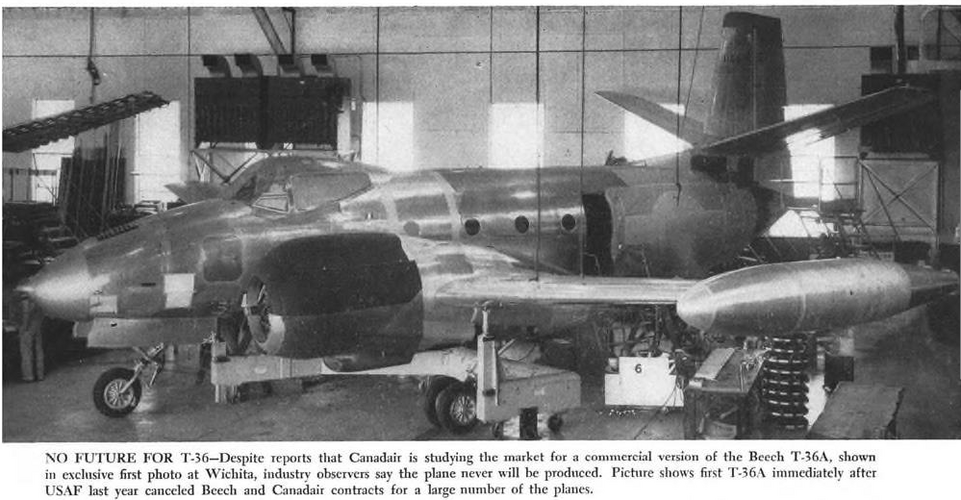From Bill Upton's CANADAIR CL-600 / 601 / 604 CHALLENGER (PDF file published by the Canada Aviation Museum):
http://documents.techno-science.ca/documents/CASM-Aircrafthistories-CanadairCL-600Challenger.pdf
CL-60/CL-42 Trainer/Executive Passenger Transport
In 1951, the United States Air Force (USAF) issued a specification for a twin piston-engine, high performance, utility trainer transport, for aircrew navigational training, capable of accommodating 12–14 passengers. Canadair, partnered with Beech Aircraft, along with other aviation firms in the running, was invited to submit a proposal based on the specifications. The Canadair/Beech submission eventually ranked the highest and won the design competition. The new Canadair model CL-60 was the co-operative design proposal to be designated as the T-36 in USAF service. The aircraft design had an overall length of 16.07 m (52 ft 9 in.), height of 6.71 m (22 ft), and a wing span of 21.18 m (69 ft 6 in). It was intended to be powered by two Pratt & Whitney R-2800-CB17 radial engines, providing the capability of achieving a speed of 400 knots (740 km/h / 460 mph) at an altitude of 6,100 m (20,000 ft).
With the US military contract order for 227 shipsets of aircraft components, metal was cut and three sets of outer wings, tail cones, empennage and rear fuselage were manufactured at Canadair and shipped to Beech beginning in 1952 for final assembly. However, with the assembly of the prototype aircraft well advanced, the T-36 project was terminated in June 1953 when all such foreign military contracts were cancelled, as the Eisenhower administration came to power and made across the board spending cuts. Only a full-scale mockup, in natural metal with USAF markings, was ever completed at the Beech facilities.
By January 1954, the CL-60/T-36 design was seen to be readily adaptable into the civilian model CL-42, for use as a high performance executive transport, capable of carrying 10 to 12 passengers and a crew of two. Detailed examination of the CL-60 design data and wind tunnel results showed that, while it fulfilled all of the military requirements, the design made it somewhat unsuitable for the civil market without a great deal of modifications. The fate of the CL-42 civilian executive version followed that of its predecessor when it was proved too expensive to be put into production.
Captions:
1. This artist’s rendition of the CL-60/CL-42 in Canadian military markings is composited over an actual photo of the Canadair facilities at Cartierville Airport circa 1952.
2. Completed T-36 wings in Canadair’s Experimental Shop.













